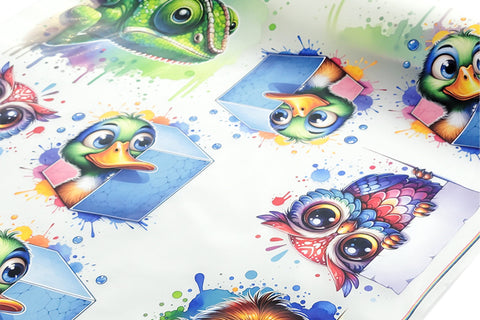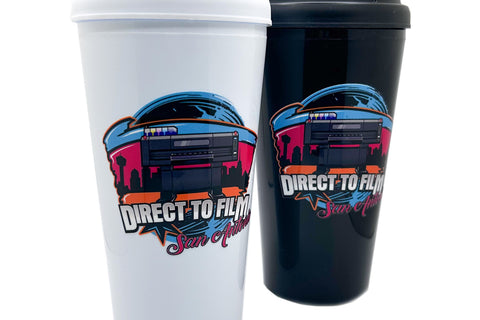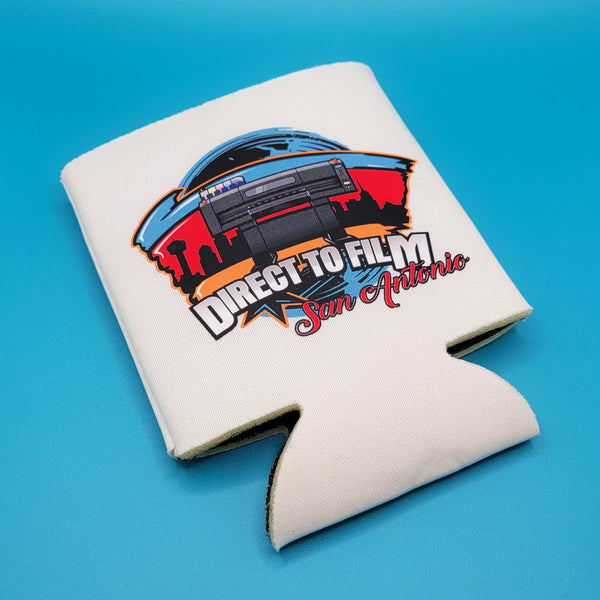Wearing a DTF-printed shirt isn’t just about style, but also about comfort and design durability that stand out on any fabric. However, keep in mind that even the best transfer won’t look right on the wrong shirt. So, what makes a shirt 'best' for DTF transfers? Obviously, shirt fabric compatibility, texture, and overall quality.
Now, it's time to develop an understanding so that you can maximize print quality, reduce rework, and boost customer satisfaction.
What Makes a Shirt Suitable for DTF Transfers?
DTF transfers are highly versatile, but a perfect choice of shirt fabric can improve print vibrancy, durability, and softness. Check how DTF works. Here are the features of an ideal shirt for DTF transfer:
-
The shirt's fabric should withstand high heat (315–350°F during pressing) without melting, scorching, or distorting.
-
It must have a smooth surface for better ink adhesion because a consistent surface ensures even ink absorption and a strong, lasting print.
-
The fabric's ability to withstand washing and wear. It also defines the longevity of your DTF transfer.
-
The best shirts for DTF transfers should be comfortable to wear with a soft, pleasant feel.
Best Fabrics for DTF Transfers
What fabrics are best suited for DTF transfers? Here is the range of some fabrics that consistently deliver superior results:
100% Cotton
For DTF transfers, 100% cotton is the top-rated choice because cotton's natural fibers are highly absorbent for DTF ink and create sharp, vibrant designs. It's breathable, soft, and widely available, which makes it a popular choice.
Cotton can sometimes shrink if not pre-shrunk. Look for ring-spun cotton or combed cotton for a smoother, more refined surface. This fabric is perfect for fashion tees, casual wear, hoodies, sweatshirts, and tote bags etc.
Polyester
It is a synthetic fabric and has durable and moisture-holding properties. Polyester can hold DTF inks very well, which results in bright and highly vivid prints. This fabric does not shrink and is ideal for active lifestyles.
There are a few considerations for polyester, as it is more sensitive to heat than cotton. It's important to use lower heat settings during the pressing process to avoid scorching, melting of the fabric.
Pre-pressing can reduce moisture and improve results. This fabric is suitable for sportswear, activewear, athletic jerseys, corporate uniforms, and outdoor gear.
Cotton-Polyester Blends
Cotton-polyester blends provide the softness and breathability of cotton with the durability, wrinkle resistance, and reduced shrinkage of polyester. They generally offer excellent ink absorption and vibrant color retention.
Blends with high cotton content, like 60/40 cotton/poly or 50/50 cotton/poly, perform very well for DTF. However, keep in mind that a very high polyester ratio may slightly impact ink absorption compared to 100% cotton.
Tri-Blends (Cotton/Polyester/Rayon)
These blends have cotton's comfort, polyester's durability, and rayon's silky smooth feel and drape. You can get a super soft shirt with a unique aesthetic of DTF.
Tri-blends are generally compatible, but require a bit more care during washing. They are usually used in luxurious tees.
Other Fabrics Compatibility
Beyond the top choices, DTF is also versatile for many other fabric types, but with specific considerations:
-
Nylon is durable and water-resistant, but it works for activewear and outerwear. However, it's heat-sensitive and may require specific adhesives or printing adjustments.
-
DTF also works on smoother denim, but it is a thicker cotton fabric, commonly used for jeans and jackets.
-
You can also apply DTF transfers to treated leather and faux leather. It offers durable and colorful results for accessories like bags and belts.
-
Silk is a very delicate protein fiber, but it can accept DTF transfers. Be careful with heat management due to its delicate nature.
Factors Beyond Fabric Composition in DTF
Other than fabric compatibility, the best DTF results also depend on the following factors:
Fabric Weight (GSM)
Medium-weight shirts (150-180 GSM) generally offer the best balance of support for designs and comfort. Lighter fabrics may not provide enough support for detailed prints, and heavier fabrics can sometimes feel stiff after printing.
Texture and Weave
A smooth, tight weave is ideal for DTF transfers as it ensures even ink adhesion and prevents the design from pooling or feathering. Heavily textured fabrics like corduroy or waffle-knits can pose challenges and may show texture through the print.
Shirt Color
On light-colored shirts, DTF inks vibrantly pop against them. Darker shirts may require a white underbase layer to ensure colors appear vibrant and opaque.
Pre-shrunk vs. Non-Pre-shrunk
Go for the pre-shrunk shirts to minimize the risk of distortion after washing. It ensures your design remains intact and doesn't warp.
Essential Tips for the Best DTF Transfers
-
Always perform a small test print on a sample piece of your chosen fabric before committing to a large production run.
-
Store your blank shirts, DTF film, and adhesive powder in a dry, cool environment to maintain their quality.
-
Different fabrics require specific temperature, pressure, and time settings.
-
Ensure your fabric is clean and free from any lint, dust, or coatings that could interfere with the transfer process.
Choose DTF San Antonio For the Best Custom DTF Transfers
DTF San Antonio is the perfect partner who delivers exceptional DTF gang sheets & UV DTF transfers with speed and professionalism. They serve hobbyists, entrepreneurs, and established businesses.
Plus, they simplify the process with an easy-to-use gang sheet builder that lets you upload and arrange your designs in minutes, without dealing with messy screens or vinyl weeding.
With eco-friendly, water-based CMYK printing at a low application temperature (305°F), their transfers offer vibrant, stretchable, and durable results on cotton, polyester, and blends.
FAQs
Can I use DTF transfers on polyester shirts?
Yes! DTF works well on polyester fabrics. Keep in mind, DTF transfers to colored polyester can present challenges because of dye migration. Plus, be mindful of heat management.
What is the best shirt color for DTF printing?
DTF handles all color models, including RGB and CMYK, because it prints white underbase ink, ensuring your design stands out.
Should I pre-wash shirts before applying DTF?
Not necessary, but using pre-shrunk shirts is recommended to avoid distortion after the first wash.
Why is my DTF transfer not sticking properly?
Check your heat press settings, as low pressure, insufficient heat, or incorrect dwell time can cause poor adhesion.











